Donate
| SECTION I | ---------------------------------- | PURPOSE AND SCOPE |
| SECTION II | ---------------------------------- | ORGANIZING PATROLS |
| SECTION III | ---------------------------------- | WARNIGNS AND SAFEGUARDS |
| SECTION IV | ---------------------------------- | RALLYING POINTS |
117. Purpose and Scope.
This chapter tells how the patrol leader uses Patrol Steps (Troop Leading Procedure) in planning and preparing patrols. The last step, execute the mission, is discussed in chapter 13. The patrol leader considers all steps, but accomplishes only those his particular situation requires. In this chapter each step is discussed separately for purposes of clarity. In practice, the experienced patrol leader considers and accomplishes two or more steps simultaneously. For example: he studies situation and terrain concurrently with study of the mission; he coordinates continuously, whenever and wherever he can; he supervises at all times, personally and through subordinates; he reconnoiters as early as possible and combines this with other actions (fig. 67).
118. Receive and Study the Mission.
a. During issuance of the order (briefing or operation order), the patrol leader listens carefully to insure that he clearly understands all information, instructions, and guidance; he makes notes for later use in planning; after the order, he asks questions if any points are not clear.
b. The patrol leader carefully studies the mission.
Through this, and study of the terrain and situation, he identifies the essential tasks to be accomplished in executing the mission. These essential tasks become missions of the patrol's elements and teams (para 3a and b, fig. 78) for which organization, personnel, and equipment must be considered. For example, the mission is "Raid the guerrilla camp in vicinity coordinates FL 016867 to kill or capture all personnel." The blocking of routes of escape from the camp is an essential task which must be accomplished to execute the mission.
119. Plan Use of Time.
Combat situations seldom allow the patrol leader as much time for planning and preparation as he would like. Proper use of available time must be planned.
a. As soon as the patrol leader completes study of the mission, he quickly makes a mental or written time schedule which allots time for each action of the patrol (fig. 68).
b. He plans the time schedule around times (if any) specified in the operation order, such as time of departure, time to make reconnaissance, or time of return. He uses a planning sequence called "reverse planning," meaning that he starts with the last action for which a time is specified and works back to receipt of the operation order. This helps insure that time is allowed for all necessary actions. In planning us~ of time, the patrol leader insures that subordinate leaders and patrol members are allowed time necessary to prepare for the mission.
120. Study Terrain and Situation.
The patrol leader studies the terrain over which the patrol will operate and the friendly and enemy situations, relating these to his study of the mission and identification of essential tasks to be accomplished.
a. Terrain.
He makes a detailed study of the map and of aerial photos, if available. He notes fields of fire and observation, cover, concealment, obstacles, key terrain features, and avenues of approach and withdrawal. He studies the objective area very closely. He considers the influence of terrain on execution of the mission.
(1) Terrain may influence the patrol's size, organization, and equipment. For example, a stream or lake to be crossed may require boats and extra men for boat crews.
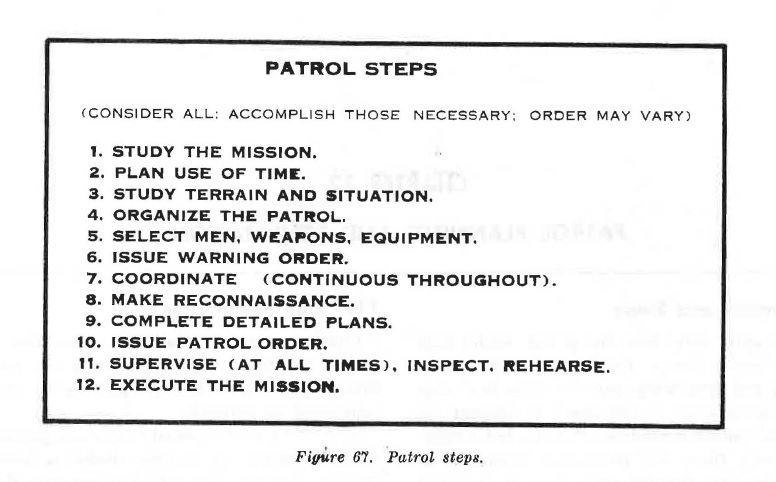
Figure 67. Patrol steps.
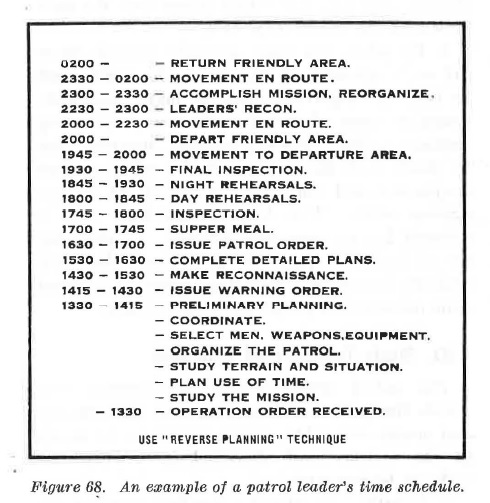
Figure 68. An example of a Patrol leader's time schedule.
(2) Patrol formations while moving depend on the terrain; that is, for difficult terrain- close formations, for open terrain -extended formations.
(3) Terrain may effect speed of movement.
(4) Terrain in the objective area helps determine security needed, positioning of fire support, manner of conducting the leaders' reconnaissance, and the plan of action at the objective.
b. Situation.
He studies the strengths, locations, dispositions, and capabilities of both friendly and enemy forces that may affect the patrol's operation.
121. Make Tentative Plan
From study of the mission, terrain, and situation, the patrol leader formulntes a tentative plan of action for accomplishing the mission. This plan includes the number of men needed and how they will be organized, the weapons and equipment needed, and the manner in which the elements and teams organized will be employed. Manner of employment, or scheme of maneuver, is the concept of operation. The tentative plan is further developed into the complete and detailed plan of operation which is announced in paragraphs 3, 4, and 5 of the patrol order (fig. 78).
122. Organize the Patrol and select Men, Weapons, and Equipment.
Organization consists of determining the elements and teams required to accomplish essential tasks, selecting men to comprise these elements and teams, and determining the weapons and equipment the men will need. Organization is a two-step process-general organization and special organization.
a. General Organization.
The patrol leader establishes the patrol headquarters (if needed) and the elements required to accomplish the mission (fig. 69).
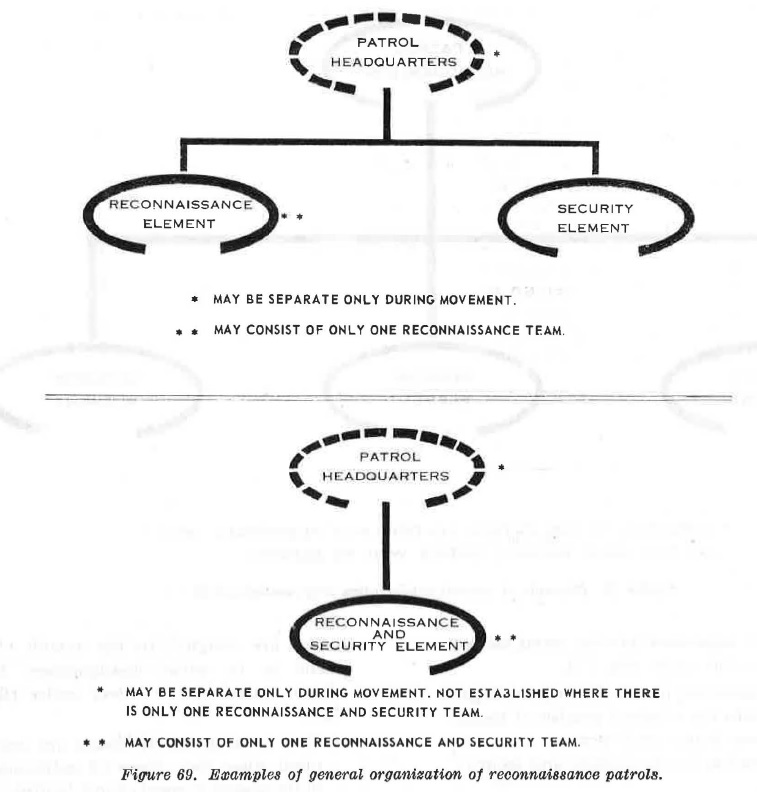
Figure 69. Examples of general organization of reconnaissance patrol.
<-- --------------------------------------------------------------------------- --> <-- ------------------------------ SECTION II -------------------------------- --> <-- --------------------------------------------------------------------------- --> SECTION II. ORGANIZING PATROLS.
(1) Patrol headquarters.
As far as possible, element members are assigned to patrol headquarters duties during movement, and return to their elements to perform their primary duties in the objective area. This double use of men, when practicable, helps accomplish an always desirable goal-that of keeping the size of the patrol as small as possible. When all headquarters duties can be performed in this manner, a separate patrol headquarters is not established.
(2) Elements.
(a) Reconnaissance patrols.
1. A two-, three-, or four-man patrol with a simple point reconnaissance or surveillance mission is not organized into elements. Instead, a single reconnaissance and security team is organized.
2. A large patrol, with a more complex mission of point or area reconnaissance or surveillance, requires a reconnaissance element and a security element or a combination reconnaissance and security element.
(b) A combat patrol normally requires an assault element, a security element, and a support element. When appropriate, however, the support element may be eliminated by adding automatic weapons to the assault element (fig. 70).
b. Special Organization. Each element of a patrol is further organized into the teams needed to perform essential tasks (fig. 71).
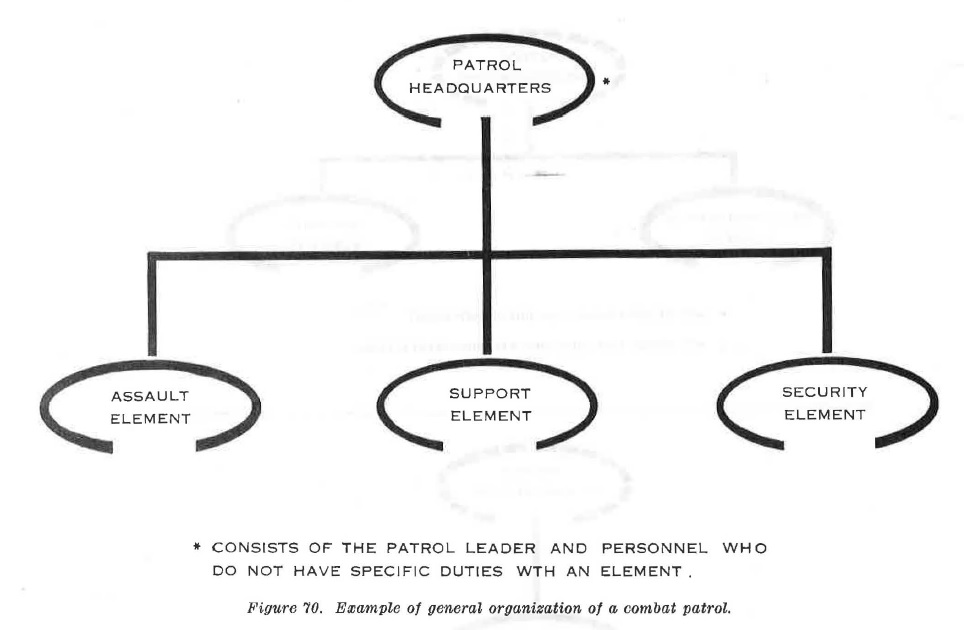
Figure 70. Examples of general organization of a combat patrol.
(1) Reconnaissance patrol elements are organized into the required number of reconnaissance teams and security teams or combination reconnaissance and security teams.
(a) As mentioned above, a small patro1 with a simple mission may be organized as a single reconnaissance and security team.
(b) A 1arge patrol, with a more complex mission, is organized into the needed number of reconnaissance teams and security teams or into reconnaissance and security teams.
(2) Combat patrol elements are organized into teams corresponding to the elements organized (assault, security, support). Scout dog and special purpose teams may also be organized. Demolition, search, and prisoner teams are three examples of special purpose teams. Scout dog teams are assigned to the security element. Special purpose teams are assigned to the assault element or to patrol headquarters for direct control by the patrol leader (fig. 72).
(a) Two or more assault teams are organized when the actions of individuals in the assn ult element cannot be directly contro1Jed by the assault element leader. This would be the case when the assault element is larger than a squad or when the objective is to be assaulted from more than one direction at the same time.
(b) Security teams are organized as needed to perform security tasks.
(c) Two or more support teams are organized when the weapons of the support element cannot be directly controlled by the support element leader. This would be the case when there are too many supporting weapons for direct control by the element leader or when weapons are positioned too far apart for direct control by the element leader.
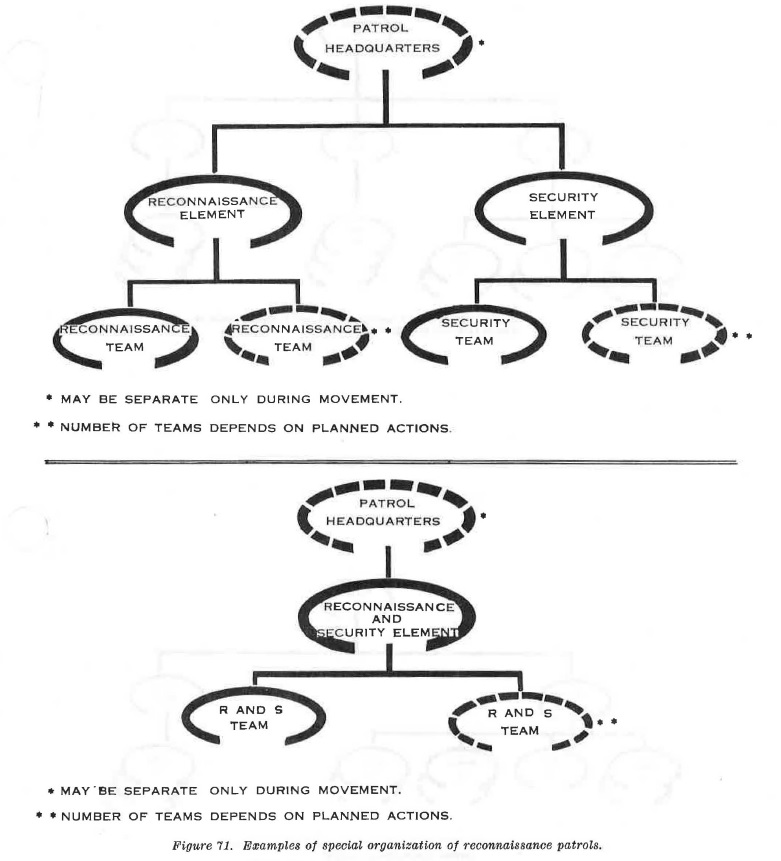
Figure 71. Examples of special organization of reconnaissance patrols
c. Men.
(1) Selection of patrol members is usually restricted to the unit commanded by the patrol leader, except as follows:
(a) The headquarters dispatching the patrol provides specially qualified personnel, such as demolitions specialists, linguists, guides, scout dog teams, and forward observers.
(b) The patrol leader's company or platoon may provide medical aid men, radio operators, and messengers.
(2) Fire team and squad integrity is maintained whenever practicable. More men than necessary are not taken merely to maintain unit integrity. Men whose physical condition may interfere with the mission are not taken. For example, a man with a cold may endanger security by coughing; a man with foot trouble may slow down the patrol. The patrol leader selects the men needed to accomplish the mission-no more-no less.
d. Weapons.
Selection of weapons (and ammunition) is based on the answer to this question: "What is needed to do the job?" The difficulty of transporting some weapons, because of bulk or weight, must be considered but is seldom a decisive factor. The value of the weapon in accomplishing the mission is weighed against the difficulty. No weapon is taken unless the personnel who are to use it are proficient in its use. Aerial resupply of ammunition is considered for patrols extended in time or distance.
e. Equipment.
There are five general purposes or areas for which equipment must be chosen. When possible, the same equipment is used, as are men, for more than one purpose or in more than one area.
(1) Routine equipment.
This is the equipment normally carried by all patrols, or which is common to all patrol members. It includes the uniform to be worn and individual equipment to be carried. Normally, every man carries his poncho and extra pairs of socks as required by conditions of weather and terrain. Gloves are included, even in warm weather, to protect hands against thorns, rocks, and barbed wire. A unit SOP prescribing routine uniform and equipment saves the patrol leader and the patrol valuable time in planning and preparing.
(2) In the objective area.
Equipment for use in the objective area includes such items as demolitions, binoculars, ropes to bind prisoners, and flashlights.
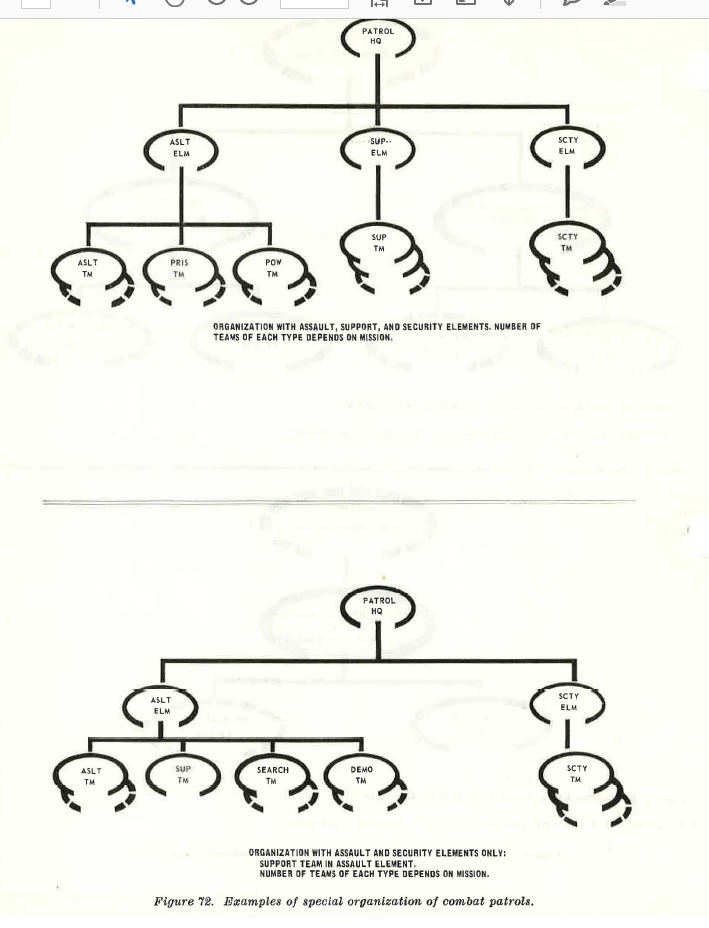
Figure 72. Examples of special organization of combat patrols.
(3) En route.
Equipment which assists in reaching the objective includes maps, binoculars, flashlights, boats, stream crossing ropes, compasses, and wire cutters.
(4) Control.
Whistles, pyrotechnics, radios, flashlights, and luminous tape assist in control en route and during actions at the objective.
(5) Water and food.
Every man carries a canteen of water. On long patrols, especially in arid areas, each man may carry two or more canteens. Rations are carried only when necessary to prevent actual hardship to patrol members ·and reduction of their combat effectiveness. The missing of a single meal or its late consumption is not a hardship and does not reduce combat effectiveness. For long patrols, aerial resupply of foodand water is considered.
<-- --------------------------------------------------------------------------- --> <-- ------------------------------ SECTION III ------------------------------- --> <-- --------------------------------------------------------------------------- --> SECTION III. WARNINGS AND SAFEGUARDS.
123. Issue a Warning Order.
The time a patrol needs to prepare depends on such factors as the nature of the mission, the proficiency of the men, and the preparations made (if any) while the patrol leader received the order and made his tentative plan. The patrol leader provides patrol members the maximum preparation time possible by issuing a warning order as soon as his tentative plan is made. It is desirable for the warning order to be issued to all patrol members, including attached personnel. When this is not feasible, it is issued to subordinate leaders. They, in turn, then issue warning orders to their elements or teams (fig. 73).
a. Situation.
Minimum details are given to include only the information the patrol needs to prepare while the patrol leader plans in detail. The complete situation is given in the patrol order.
b. Mission.
This is a brief but clear statement of what the patrol is to accomplish and the location or area in which it is to be done.
c. General Instructions.
(1) Organization.
General and special organization are prescribed and explained. Individuals are assigned to headquarters and to elements and teams unless assignment of units (squads or fire teams) as elements and teams makes assignment of individuals unnecessary.
(2) Uniform and equipment common to all. This includes clothing, personal equipment, rations and water to be carried, camouflage measures to be taken, and the means of identification the men are to carry. Prohibited items are also stated, such as wallets, letters, and personal papers which might reveal information if lost or captured.
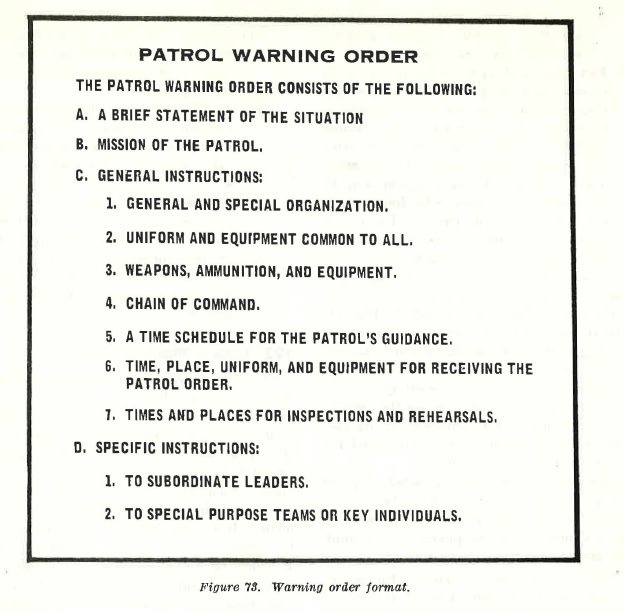
Figure 73. Warning Order Format
(3) Weapons, ammunition, and equipment.
As far as practicable, these are assigned to elements and teams. Subordinate leaders further assign to teams and individuals, as appropriate to existing organization, job positions, and special abilities of individuals.
(4) Chain of command.
In small patrols (ten men or less is a guide figure) , each man is assigned a place in the chain of command. In larger patrols, subordinate leaders are assigned relative positions and required to establish chains of command within their elements and teams.
(5) Time schedule.
The patrol is given a time schedule for all activities that are to take place (fig. 74).
(6) Time, place, uniform, and equipment for receiving the patrol order. When inspections and rehearsals are to be conducted immediately after the order, and hers are required to wear the uniform prescribed for the patrol and to bring all patrol equipment.
(7) Times and places for inspection and rehearsal. The patrol leader announces the times and places he will inspect the patrol. The time(s) of rehearsal(s) by the full patrol is given and the place, if known at the time. Complete uniform and equipment are worn and carried at all such inspections and rehearsals.
d. Specific Instructions.
Specific instructions Are given:
(1) To subordinate leaders for:
(a) Obtaining, checking, and distributing rations, water, weapons, ammunition, and equipment.
(b) Preparation of patrol members for the mission.
(c) Initiating and supervising other activities to be accomplished. This may include practice of immediate action drills, a rest and sleep period, or practice of stream crossing procedures.
(d) Reconnaissance, coordination, inspections, and rehearsals.
(2) To special purpose teams and key individuals for their preparation, such as preparation of demolitions, check of radios, and map study by point and compass men.
124. Safeguarding of Information.
In some situations, special precautions must be taken to prevent compromise of the patrol, or other operations, through leakage of information normally given in the warning or patrol orders. Such a situation may occur in counter guerrilla operations involving close association with native forces or use of native forces in patrols. Informers are often present in these circumstances.
When this possibility exists, all information is given on a strict "need to know~' basis. Other security measures include isolation of the patrol after information is given, and the withholding of information until the latest feasible time.
125. Coordinate
a. Coordination is continuous throughout planning, preparation, and conduct of the patrol.
The patrol leader may coordinate in any or all of the three areas of coordination (para 116). This is determined by the coordination effected by the commander. He may effect detailed coordination or may require this of the patrol leader. For example, the commander may arrange for the patrol to be guided to the point of departure without the patrol leader having coordinated with any unit or position. Likewise, he may coordinate the patrol's re-entry of friendly areas through another unit. At the other extreme, the patrol leader may coordinate at a company CP and OP, platoon CP-OP, and the last position through or near which the patrol is to pass. Even though some coordination is made for him, the patrol leader double checks to insure that nothing is overlooked.
b. The patrol leader makes or arranges for all coordination possible before leaving the place where he received the operation order. There, communications are better and the advice and assistance of trained and interested personnel are more readily available.
c. Examples of coordination which must be made are:
(1) Movements in friendly areas. Units in whose areas the patrol will operate must be informed so the patrol will not be endangered or unnecessarily restricted.
(2) Departure and re-entry of friendly areas. Guides may be necessary, especially if the patrol must pass friendly obstacles such as mines or wire.
(3) Fire 8upport. Carefully planned and properly coordinated fire support can help in six ways.
(a) Destroy.
Destroy enemy opposing the patrol en route, at danger areas, and at the objective.
(b) Deceive.
Deceive the enemy as to the true location or direction of movement of the patrol by cloaking withdrawal or other routes upon breaking contact.
(c) Deny.
Deny the enemy use of roads, trails, OPs, and other terrain features from which he may detect or bring action against the patrol. The enemy can also be denied the use of approaches into the objective area.
(d) Defend.
Defend the patrol against attack en route, at danger areas, and at the objective.
(e) Direct.
Assist in navigation by prearranged fires along the patrol's route.
(f) Detect.
Detect the enemy by firing on likely positions.
126. Make Reconnaissance
Visual reconnaissance confirms, clarifies, and supplements information provided by maps, aerial photos, and other sources.
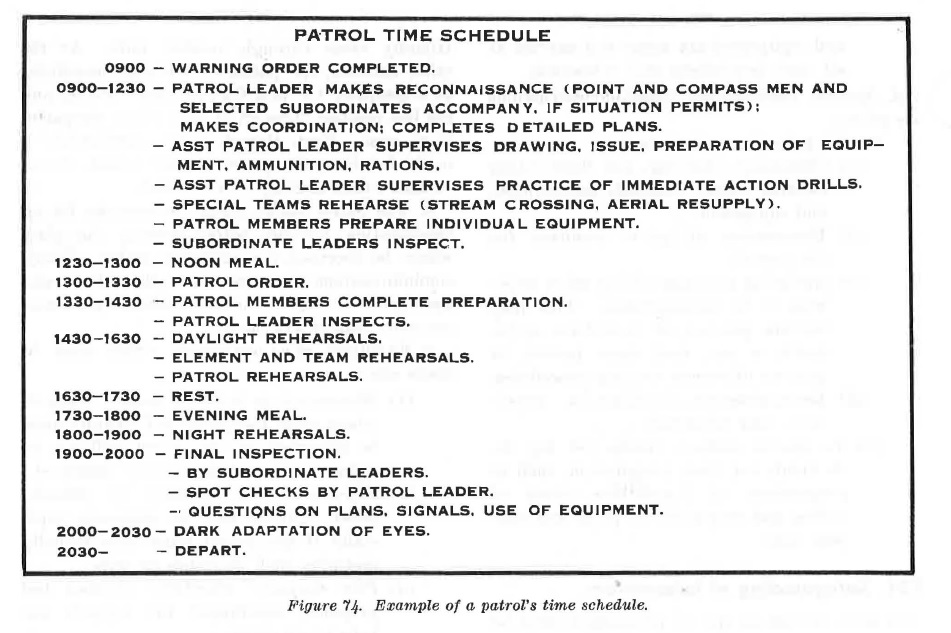
Figure 74. Example of a patrol's time schedule.
a. When possible, an aerial reconnaissance is made of the objective area and of the terrain oveT which the patrol will pass. This is the only 1neans for reconnoitering a significant portion of the area of operation.
b. A ground reconnaissance is made of as much of the patrol's area of operations as time and circumstances permit. The area to the rear of the point of departure is checked and an initial rallying point is selected ( and coordinated). The area forward of the point of departure is observed for possible routes, danger areas, and obstacles. Routes to the point of departure are selected, if appropriate.
127. Complete Detailed Plan.
The warning order has been issued; reconnaissance has been made; patrol members are preparing themselves and their equipment. The patrol leader now develops his tentative plan into a detailed plan for accomplishing the mission. (This plan is later explained to the patrol in paragraphs 3, 4, and 5-Ewemdion, Administration and Logistics, and Command and Signal of the Patrol Order, fig. 78).
The patrol leader first assigns essential tasks to be accomplished as missions for elements, teams, and individuals. After this, he plans other phases of the patrol in the sequence most convenient under the circumstances. The sequence in which planning is discussed below may be followed or modified, as appropriate.
a. Missions in the Objective Area.
Essential tasks in the objective area are identified and assigned. To the extent required by the situation, the patrol leader plans how elements, teams, and individuals are to accomplish assigned missions. In the patrol order, the concept of operation is stated in paragraph 3a, followed by assignment of missions in the objective area, which are detailed in paragraph 3c(8), (fig. 78).
b. Other Missions.
Other essential tasks are identified and assigned. These are the tasks whose successful performance enables the patrol to reach the objective and return-such tasks as navigation, security during movement, and security at halts. In the patrol order, these missions are assigned in paragraph 3b and detailed in 3a (1) through (11), (fig. 78).
c. Time of Departure and Return.
(1) Times of departure and return are based on careful consideration 0£ the times required to:
(a) Reach the objective.
Considerations include: distance, terrain, anticipated speed of movement, the friendly and enemy situation, and (if applicable) the time at or by which the mission must be accomplished.
(b) Accomplish essential tasks in the objective area.
This includes leaders' reconnaissance and movement of elements and teams into position, as well as actual accomplishment of the mission.
(c) Return to friendly area.
This may differ from time required to reach the objective. Prisoners or captured equipment may slow the patrol. The use of a different return route may change the time required.
(2) Advantage is taken of light and weather conditions which will aid departure and return; for example, the greater darkness before moon rise and after moon set, and the darkness and noise of wind and rain during stormy periods.
(3) When the operation order specifies times of departure, return, or accomplishment of the mission, the same considerations are applied, so far as possible.
d. Primary and Alternate Routes.
(1) A primary route and one or more alternate routes of return are selected (para 16 and 113).
(2) Routes are divided into "legs" with each leg starting, i£ possible, at a point which can be recognized on the ground (fig. 75) , and a pace count is used between each point. This makes i~ easier to stay oriented at all times. When it is not possible to start and stop "legs" at recognizable points, a continuous pace count can be used.
e. Departure and Re-entry of Friendly Areas.
These actions must be coordinated with the units near or through whose areas the patrol will move. Two methods for accounting for personnel during departure and re-entry are discussed in paragraph 19. These may be used or any method which, under the circumstances, least endangers the patrol and other friendly forces (para 116 and 125).
f. Organization for Movement.
Formations must be planned for movement of the patrol to and from the objective area. Location of elements, teams, and individuals in the various formations used must be planned. This is called organization for movement (fig. 76).
(1) The dismounted platoon formations discussed and illustrated in FM 7-15 are adaptable to any size patrol. Each formation has certain advantages and may be varied to fit the terrain and the situation. The patrol can change formations as the situation requires. For example, a situation may require some sacrifice of control in order to achieve greater dispersion; another situation may require great stealth at the expense of some speed of movement.
(2) These are the major factors that influence organization for movement.
(a) Enemy contact.
The most important consideration in organizing for movement is the plan for actions to take if the patrol makes contact with the enemy.
(b) Tactical integrity.
As far as possible, organization for movement maintains element and team integrity. This helps in control, security, employment at the objective, and on enemy contact.
(c) Employment at objective.
Consistent with other considerations, organization for movement permits quick and easy employment at the objective.
(d) Control.
Some formations provide better control than others. How important is control in relation to other factors? The size of the patrol is an important consideration.
(e) The enemy situation.
Where is the enemy? How strong is he? What is the danger of ambush?
(f) Speed of movement.
When must the patrol reach the objective? When must it return? Rate of movement is governed by the speed of movement of heavy weapons and equipment. If circumstances permit, they are placed near the front so they set the pace. The need for speed must be weighed against the need for security.
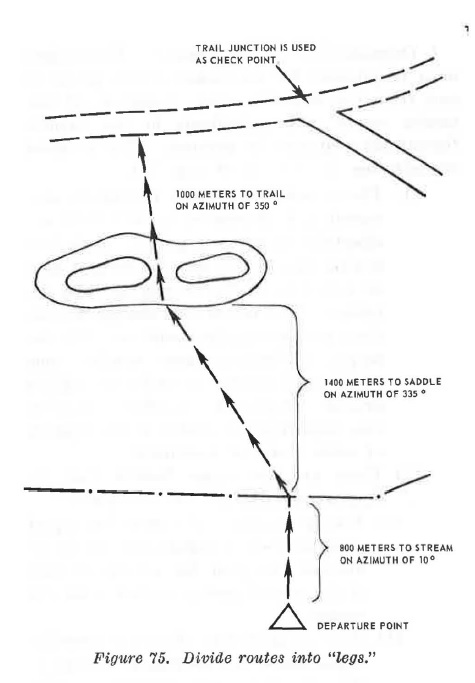
Figure 75. Divide routes into "legs".
(g) Stealth.
Can the men move quietly. Does the formation force the flanks to move through noisy underbrush? Which is most important-stealth or speed?
(h) Security.
From which direction is contact with the enemy most likely to come? Will the patrol have all round security? Elements, teams, and individuals must be assigned areas of responsibility. Will speed or stealth provide the best security? A carefully controlled combination of speed and stealth is usually best.
(i) Dispersion.
Consistent with control, men are dispersed so that a sudden burst of fire will cause the fewest casualties.
(j) Terrain.
How does terrain affect movement? Is it wooded or open? Are there roads or streams to cross?
(k) Visibility.
Is visibility good or poor? Can the enemy see the patrol? Can the men be seen and controlled?
(l) Weather.
How will the weather affect the ground, streams, and visibility?
g. Actions at Danger Areas.
(1) Specific plans are made for crossing each danger area which can be identified in advance.
(2) General plans are made for crossing danger areas which are not identified in advance-plans which can be quickly modified to fit the situation.
(3) See paragraphs 28 and 136 for detailed discussion of crossing danger areas.
h. Actions on Enemy Contact.
The patrol may make unexpected and undesired contact with the enemy, either through chance contact or by encountering an ambush, and must be prepared to attack contact quickly. To engage the enemy any longer than necessary jeopardizes the mission. Organization for movement and planned actions on enemy contact must support each other.
(1) Chance contact may be broken by use of the "clock system," execution of an immediate action drill, or by fire and movement and/or fire and maneuver.
(a) The "clock system."
The direction in which the patrol is moving is always considered to be 12 o'clock. When contact is made, and the patrol leader's decision is to break contact by the clock system, he shouts a direction and a distance. For example, "Ten o'clock-two hundred," means for the patrol to move in the direction of 10 o'clock for 200 meters. Each man must be alert to move in relation to the patrol's direction of march, not in relation to the direction he is forcing at the moment.
As far as possible, patrol members keep their same relative positions as they move so the original formation is not disrupted (fig. 77). Subordinate leaders must be especially alert to insure all men get the word and that elements and teams move quickly, correctly, and in an orderly manner. The command is repeated only as necessary to insure that all men comply.
Unnecessary repetition creates confusion and noise which may help the enemy to more accurately determine the location and extent of the patrol.
(b) Immediate Motion drill.
An immediate action drill may be executed as the best means of breaking contact.
(c) Fire and movement and/or fire and maneuver.
Individuals or portions of the patrol return fire while another individual or portion moves a short distance. Each covers the other by fire until contact is broken by all.
(2) Ambush may be countered by execution of an immediate action drill (ch 21).
(3) Ambush, executed as an immediate action drill, may also be the best means to make contact which, though not desired, cannot be avoided (ch 21).
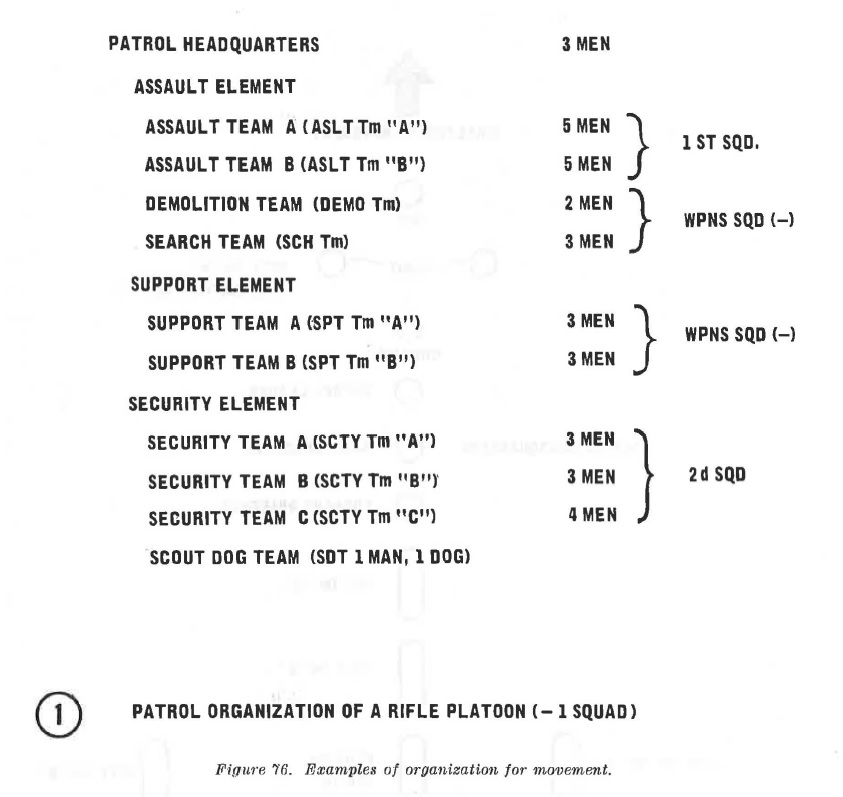
Figure 76. Examples of organization for movement.
<-- --------------------------------------------------------------------------- --> <-- ------------------------------ SECTION IV -------------------------------- --> <-- --------------------------------------------------------------------------- --> SECTION IV. RALLYING POINTS.
i. Rallying Points and Actions at Rallying Points.
(1) Selecting rallying points.
Likely locations for rallying points are selected during map study or reconnaissance. The patrol leader must:
(a) Always select initial and objective rallying points. If suitable areas for these two rallying points are not found during map study or reconnaissance, he selects them by grid coordinates or in relation to terrain :features.
(b) Select likely locations for rallying points en route.
(c) Plan for the selection and designation of additional rallying points en route as the patrol reaches suitable locations.
(d) Plan for the selection o:f rallying points on both near and :far sides of danger areas that cannot be bypassed, such as trails and streams. This may be done by planning that, if good locations are not available, rallying points will be designated in relation to the danger area; for example, "50 meters this side of the trail," or "50 meters beyond the stream."
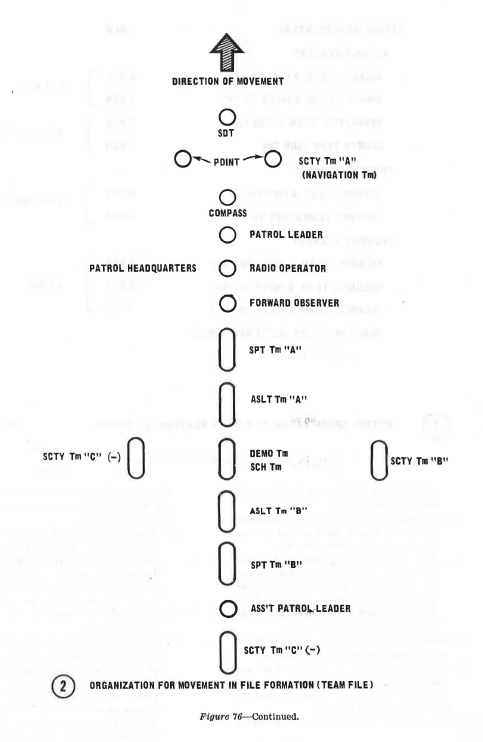
Figure 76. Continued.
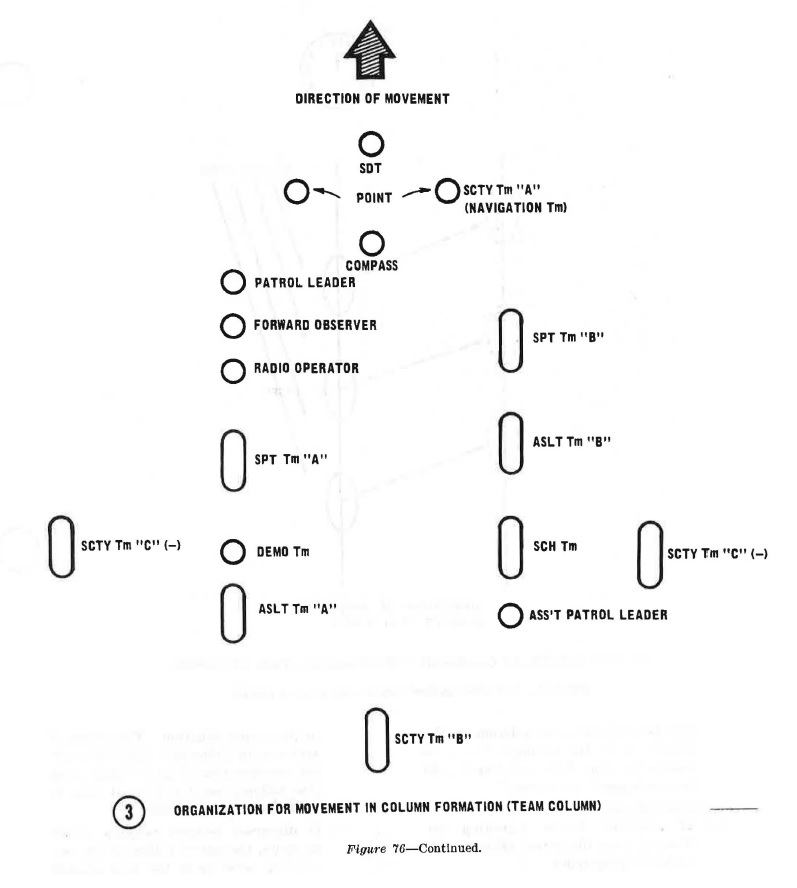
Figure 76. Continued.
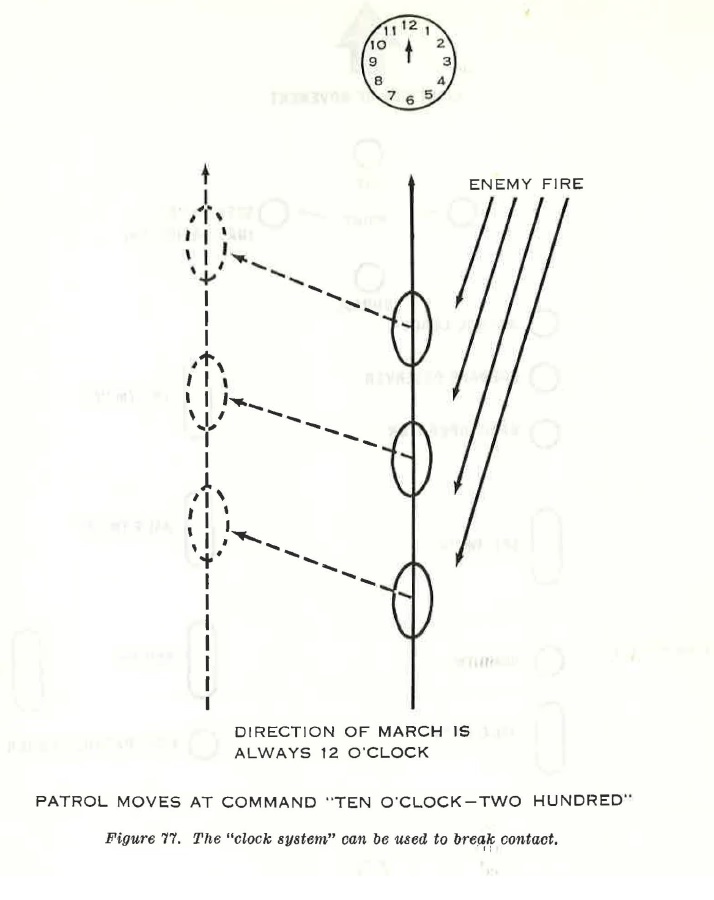
Figure 77. The "Clock system" can be used to break contact.
(2) Use of rallying points.
(a) If dispersed before departing the friendly area, the patrol rallies at the initial ra1lying point.
(b) If dispersed after departing the friendly area, but before reaching the first rallying point en route, the patrol rallies at the initial rallying point or at the first rallying point en route. Either course of action may be extremely difficult because of mines, wire, or the enemy situation. The course of action to be followed is based on careful consideration of all circumstances. The rallying point to be used must be stated in the patrol order.
(c) If dispersed between rallying points en route, the patrol rallies at the last rallying point or at the next selected rallying point. As before, the course of action to be followed is based on careful consideration of all circumstances. The decision is announced at each rallying point.
(3) Actions at rallying points.
Actions to be taken at rallying points must be planned in detail (para 113). Plans for actions at the initial rallying point and rallying points en route must provide for the continuation of the patrol as long as there is a reasonable chance to accomplish the mission. Two examples of plans are-
(a) For the patrol to wait until a specified portion of the men have arrived and then proceed with the mission under the senior man present. This plan could be used £or a reconnaissance patrol where one or two men may be able to accomplish this mission.
(b) For the patrol to wait for a specified period, after which the senior man present will determine actions to be taken based on personnel and equipment present. This could be the plan when a minimum number of men or certain items of equipment, or both, are essential to accomplishment of the mission.
j. Actions in Objective Area.
What will be the actions of elements, teams, and individuals in the actual accomplishment of the mission at the objective? What other actions will take place in the objective area, such as:
(1) Occupation and security of the objective rallying point.
(2) Conduct of leaders' reconnaissance.
(3) Final checks of plans, personnel, weapons, equipment.
(4) Use of artillery or mortar support.
(5) Preliminary positioning of elements, teams, key individuals.
(6) Signals and other control measures.
(7) Actions to be taken if prematurely discovered in objective rallying point, before assault is launched (combat patrols), before reconnaissance is completed (reconnaissance patrols), or before information is disseminated (especial, applicable to reconnaissance patrols).
(8) Movement from objective to objective rallying point or alternate objective rallying point.
(9) Dissemination of information.
k. Debriefing.
This must also be planned. A good method is £or the patrol to assemble for a short conference before the debriefing. Notes, thoughts, and observations are compared so that complete, concise, and accurate information can be quickly given at the debriefing.
l. Other Actions.
Actions not included in other parts of the detailed plan are planned as "other actions." This includes plans for stream crossing, loading boats, aircraft, or trucks, and aerial resupply of ammunition or rations. These are the plans which, in a written operation order, would be placed in annexes.
m. Rehearsals and Inspections.
Rehearsals and inspections are vital to proper preparation. They must be carefully planned and conducted even though the men are well experienced in patrolling. Coordination is made with the commander or S3 for use of a rehearsal area resembling as closely as possible the objective area. Plans must provide for inspections by subordinate leaders as well as the patrol leader.
n. Rations.
When will patrol members eat? Is it appropriate to carry rations? H so, what kind and where will they be obtained? Aerial resupply is considered for long patrols.
o. Arms and Ammunition.
The warning order specifies the arms and ammunition needed to support the tentative plan. Are these adequate and appropriate for the detailed plan?
p. Uniform and Equipment.
Does the detailed plan require any additions, deletions, or other changes to the uniform and equipment specified in the warning order?
q. Method of Handling Wounded, Dead, and Prisoners.
Does the unit have an SOP for handling of wounded, dead, and prisoners? Is the SOP appropriate for the operation or are modifications necessary? The nature of the operations being conducted, conventional or counter guerrilla, may dictate the methods used. Whatever the methods or situation, the handling of wounded, dead, and prisoners must not compromise the patrol's accomplishment of its mission.
(1) Wounded.
(a) Remove from the immediate area before applying first aid. Administration of first aid during contact increases the risk of more casualties.
(b) Walking wounded may-
1. Be evacuated by air (generally applicable only in counter guerrilla operations).
2. Accompany the patrol ( conventional or counter guerrilla operations).
3. Conceal themselves for later pickup (generally applicable only in conventional operations).
4. Return on their own to friendly areas (generally applicable only m conventional operations).
(c) Seriously wounded may:
1. Be evacuated by air (generally applicable only in counter guerrilla operations).
2. Be carried by the patrol (conventional or counter guerrilla operations). This is generally practical only when the patrol is on its route of return to friendly areas.
3. Be concealed £or later pickup (generally applicable only in conventional operations) . If possible, another man is left with the wounded man.
(d) Dead may be handled as are seriously wounded, except that, when concealed for later pickup, no one is left with the body.
(e) Prisoners are bound and gagged, and may be blindfolded if appropriate. They may then:
1. Be returned, under guard, to friendly areas (generally applicable only in conventional operations):
2. Be evacuated by air, taken with the patrol, or concealed for later pickup, in the same manner as seriously wounded.
r. Signals.
When and where will signals be needed to control the patrol~ These signals must be planned and rehearsed. Some instances where signals may be needed are to lift or shift supporting fires, to start an assault, to order withdrawal from the objective, to signal "all clear," and to stop and start the patrol. Visual and audible signals such as arm-and-hand signals, pyrotechnics, voice, whistle, radios, and infrared equipment may be used. Any signals planned must be known to all patrol members.
s. Communication with Higher Headquarters.
When communication with higher headquarters is required or anticipated, the plan must include radio call signs, primary and alternate frequencies, times to report, and, if appropriate, the special code to be used.
t. Challenge and Password.
What are the current challenge and password~ If they will change during the patrol's absence, what will be in effect on return~ Have a challenge and password been established for the patrol to use outside friendly areas (para 19)
u. Chain of Command.
Was the chain of command properly established in the warning order?
v. Locations of Leaders.
The locations of the patrol leader and assistant patrol leader are planned for all phases of the patrol-during movement, at danger areas, and at the objective.
(1) The patrol leader plans to be where he anticipates he can best control and direct the patrol at each phase.
(2) The assistant patrol leader may be assigned specific duties in a sensitive location during any phase of the patrol or may assist the patrol leader in control of the entire patrol by locating himself where he can best assume command, if required.
(3) Some suggested locations for the assistant patrol leader during actions in the objective area, with no special considerations, are:
(a) On a raid or ambush, position with the support element.
(b) On a point reconnaissance, position in the objective rallying point.
(c) On an area reconnaissance, position with a reconnaissance and security team which is directed to move to and establish the point at which all teams are to report after reconnaissance.
128. Issue Patrol Order.
The patrol order is issued in standard operation order sequence, in the format shown in figure 78. When appropriate, it is shortened and simplified as discussed h1 paragraph 113.
a. Available visual aids, such as terrain models, blackboards, and sand tables, are used to help insure complete understanding by all. If visual aids are not available, planned actions are sketched in the sand, dirt, or snow.
b. Leaders and patrol members make notes as appropriate but hold questions until the order is completed. This prevents interruption of the patrol leader's chain of thought.
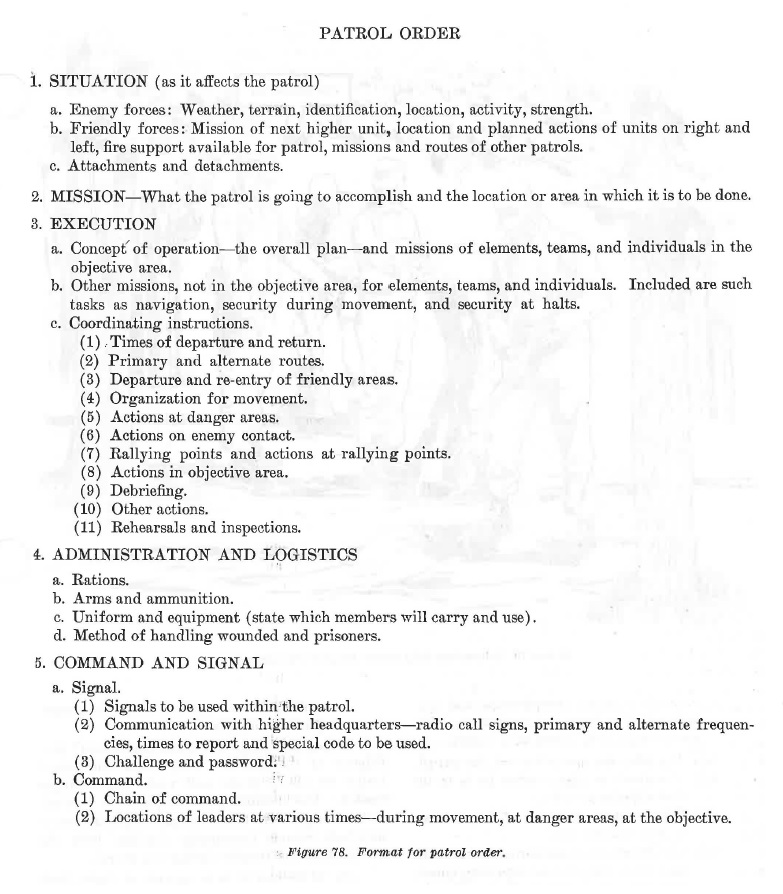
Figure 78. Format for patrol order.
129. Inspect, Rehearse, Supervise.
Inspections and rehearsals are vital to proper preparation. They are conducted regardless of the patrolling experience of the men. Their extent is governed by the amount of time available, the complexity of the planned operations, and the experience of the men.
a. Inspections determine the patrol's physical and mental state of readiness (fig. 79).
(1) Inspections are conducted before rehearsals to insure completeness and correctness of uniform and equipment. Men are questioned to insure each knows:
(a) The planned reason of the patrol.
(b) The part he plays - what he is to do and when he is to do it.
(c) What others are to do, as far as their actions concern him.
(d) Challenges and passwords, codes, radio call signs, frequencies, reporting times, and any other details that will help insure everyone is fully prepared.

Figure 79. Inspections help insure the patrol's readiness.
(2) An inspection is conducted after final rehearsa1, just before departure, to insure that all equipment is still in working order, that nothing is being left behind, and that the men are ready to accomplish the mission.
b. Rehearsals help insure the operational proficiency of the patrol.
They allow the patrol leader to check planS and make any changes as needed. The suitability of equipment is verified. It is though well directed rehearsals that patrol members become thoroughly familiar with the actions they are to take during the patrol.
(1) If the patrol is to operate at night, both day and night rehearsals are conducted.
Terrain similar to that over which the patrol will operate is used, if available. All actions are rehearsed when time permits. When time is limited, only the most critical phases are rehearsed. Actions in the objective area are the most critical of all phases and are always rehearsed.
(2) An effective rehearsal method is for the patrol leader to talk the entire patrol through each phase, describing the actions of elements, teams, and individuals and requiring performance of these actions. This is called a "dry run." When required actions are clear to all, all phases are gone through with the patrol leader and subordinate leaders using only the signals and commands that will be used during the actual conduct of the patrol. This is called a "wet run." Time permitting, as many "dry runs" and "wet runs" are conducted as are necessary to insure proficiency. When possible, element and team leaders conduct similar rehearsals for their units before the final rehearsal of the entire patrol.
c. Supervision is continuous by all leaders.
130. Conduct the Patrol.
Execute the Mission is the last Patrol Step. See chapter 13 for detailed discussion.